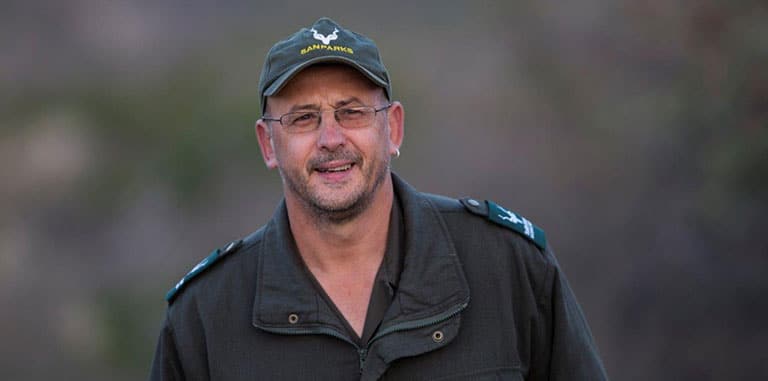
Tracking and protecting rhinos in SANParks
South Africa is home to the majority of rhinos left in the world and they are under constant threat from poachers. Despite the concerted efforts of conservationists, poaching is still increasing. The Boucher Legacy is dedicated to the protection and conservation of rhinos in South Africa which is why we have partnered with Dr Sam Ferreira and the South African National Parks (SANParks) Scientific Services to track rhino in certain focus areas. This effort helps the SANParks team understand the movement of rhino in areas where poaching is most prevalent. This research is also unearthing valuable information and statistics about rhino movement and behaviour that will be used to further our rhino conservation and protection activities well into the future.
Dr Sam Ferreira from the South African National Parks Scientific Services had the following to say with regards to the work The Boucher Legacy has committed to for this project:
“South Africa is home to most of the world’s rhinos because of sound conservation management and by allowing South Africans to gain value from having rhinos in parks and tourism lodges. Rhinos are South African icons. So is Mark Boucher, a South African cricket icon that embraced the plight of rhinos through his foundation; The Boucher Legacy. The foundation made huge contributions through supporting the RHODIS DNA system that helps to bring perpetrators that kill rhinos for horn to account and to ensure that they feel the full might of justice.
The Boucher Legacy, however, have made an additional very important difference, specifically for live rhinos! The foundation provides key support for understanding why rhinos do what they do. The RED115 initiative supported having 85 white rhinos and 30 black rhinos fitted with satellite transmitters and the foundation continues to support the use of tracking devices for several other species to this day. This tracking initiative played a significant role in key lessons that SANParks have learned about the habits of rhinos, lessons which are now changing how rangers look after rhinos.
The transmitters allowed scientists to identify the different effects of droughts on black compared to white rhinos. The transmitters also allowed SANParks scientists to provide hotspot analyses for rangers which help the rangers to focus their protection efforts. On top of that, SANParks can now tell what factors influence how black and white rhinos use their home range. SANParks have now identified zones that act as ecological traps where rhinos have great habitat, but not great chances of escaping poaching.
SANParks now also have safe zones where there is really nice habitat and where poaching risks are low. They are using this new knowledge to focus on preventing safe places from becoming ecological traps and at the same time turning ecological traps into safe places by securing rhinos through monitoring them intensely while protecting them.
The continued support has allowed a few additional problems to be solved. How does one monitor thousands of rhinos? Well you predict where they all are likely to be in advance! SANParks can now tell where good rhino habitats are likely to be in a month and will soon be able to tell whether a rhino is likely to be there or not. This ability will place SANParks at a significant advantage in protecting and securing rhinos, all due to the support for tracking rhinos received from Mark and The Boucher Legacy.
It is a tremendous achievement that a cricket icon from the past is helping secure a legacy of rhino icons of the future through The Boucher Legacy.”
The Boucher Legacy is proud to have been able to assist SANParks in their incredible work in safeguarding South Africa’s precious rhino and we look forward to continuing to support this project and the conservation efforts of Dr Ferreira and his team at SANParks.



Pingback: The latest rhino numbers 2019 - The Boucher Legacy
Pingback: The Boucher Legacy - Boucher Legacy